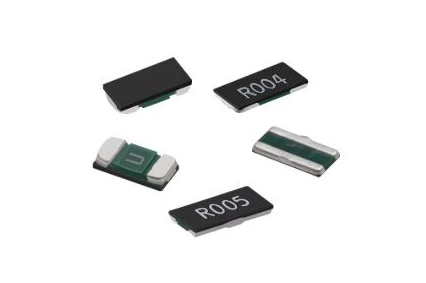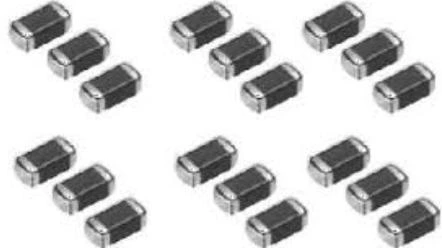Unveiling High precision Shunt Resistors: How To Make Current Detection More Accurate
Why choose high-precision shunt resistors

In the fields of power tools, electric vehicles and new energy storage, precise measurement of current not only relates to system efficiency, but also directly affects safety and lifespan. High-precision Current Sensing resistors have ultra-low resistance values, high linearity and extremely small temperature drift. They can convert tiny currents into measurable voltage signals and provide stable data support for downstream analog/digital circuits.
Accuracy comparison: 0.1% vs 1%
A 0.1% accuracy means that the error in full-scale measurement is only 0.1%. Compared with the 1% module, the measurement results are more reliable and are particularly suitable for applications with extremely high precision requirements such as electric vehicle BMS and medical instruments.
application scenarios
Lithium Battery Management System (BMS) : Accurately detect charging and discharging currents, prevent overcharging or overdischarging, and extend the lifespan of battery packs.
DC-DC converter: Respond quickly to load changes and optimize voltage regulation efficiency.
Electric tools and industrial equipment: Real-time monitoring of motor starting and braking current to ensure the safe operation of equipment.
Common packaging and resistance value specifications
The packaging types of high-precision shunt resistors are diverse, mainly divided into two categories: surface mount (SMD) and through-hole. According to the usage environment and power requirements, different resistance values and different packages can be selected
| Package Type | Advantages | Disadvantages | Typical Resistance Range |
|---|---|---|---|
| SMD (0805 / 1206) | Small footprint; suitable for high-speed SMT; low thermal resistance | Limited power handling (≤1 W) | 0.1 mΩ – 10 mΩ |
| Through-Hole (TO-220) | High power capacity (≥5 W); strong surge tolerance | Large footprint; more complex mounting process | 0.5 mΩ – 50 mΩ |
SMD shunt resistor: Suitable for mass production in consumer electronics and low-power scenarios; It has low thermal resistance, which is conducive to the heat dissipation of PCBS.
Plug-in shunt resistor: Suitable for industrial-grade equipment, inverters and other applications that need to withstand large current impacts.
Key elements of selection
To quickly find the most suitable product among numerous models, the following three major indicators need to be focused on:
Temperature coefficient (TCR)

The smaller the TCR is, the more stable the resistance value changes with temperature. The TCR of typical high-precision models can reach below ±25 ppm/°C, ensuring measurement consistency during long-term power-on.
Rated power and heat dissipation design
Shunt resistors generate heat when detecting large currents. Based on the actual peak and duration values of the current, select a model with a power margin of at least 25% or more, and combine the area of the PCB copper foil or the layout of the heat sink to improve the heat release efficiency.
Packaging thermal resistance and layout suggestions
For the SMD model, a large number of vias can be laid at both ends of the resistance value to connect the bottom heat dissipation layer. For plug-in products, sufficient space should be reserved and combined with heat sinks or fans to enhance the convection effect.
Best practices for installation and commissioning
Points to note for PCB routing
Narrow and short current traces: Minimize the trace length and cross-sectional area as much as possible to reduce additional impedance.
Separate signal and power ground: Separate the measurement ground of the shunt resistor from the ground of the large current loop to avoid potential difference interference.
Zero drift calibration
Hardware calibration: Use an external fine-tuning potentiometer to fine-tune the zero offset after the actual welding is completed.
Software compensation: Regularly read the reference value when there is no current at the MCU end and perform differential correction to ensure that the measurement always falls near the "zero point".
Case Sharing: High-Precision Shunt Resistors in Electric Vehicle BMS
In A certain new energy vehicle project, the battery management system needs to precisely detect the charging and discharging current ranging from 0 to 200 A. The engineering team selected a 0.2m Ω, 0.1% accuracy, TCR ±15 ppm/°C chip shunt resistor and increased the copper foil area in the key areas of the PCB. Through dual calibration of hardware and software, when the ambient temperature changes from -20 ℃ to 60 ℃, the measurement error is always controlled within ± 0.2A, meeting the requirements of vehicle energy management and safety early warning.
Epilogue
High-precision shunt resistors are the core components for current detection. By choosing the right product and doing a good job in heat dissipation design and calibration, the stability and safety of the system can be significantly enhanced. Whether it is in the fields of new energy, industrial automation, or precision instruments, mastering the above key points of selection and application will add luster to your circuit design. If you need more models and technical support, please feel free to contact us at any time. Let's work together to create a more efficient and reliable current detection solution!